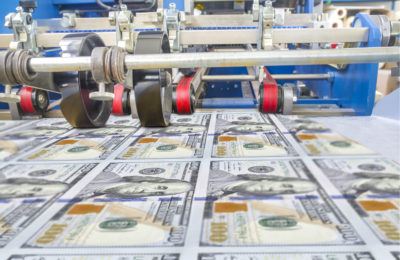More quantitative easing?!
I am often met with astonishment when I express what seems to me the rather obvious point that monetary policy was effectively tight beginning in 2008, transforming what might have been a rather routine recession into the Great Recession.
“What about quantitative easing?” they ask.
“Yes, the Fed expanded its balance sheet,” I reply. “But it did not prevent or offset the significant decline in nominal spending.”
“Wait. You think the Fed should have done more?” they ask. “You think we needed more quantitative easing?!”
“Not exactly…”
I really hate this question. It implies that quantitative easing was a step in the right direction—and that I just wish the Fed had taken a bigger step. It wasn’t, and I don’t.
In a recent EconTalk podcast, George Selgin makes the point much more eloquently:
Suppose that you have a car that keeps sputtering out. Right? And some of your friends say, ‘Well, it’s running out of gas. It’s got an empty tank. We need to pour more gas in there.’ Well, they’d be absolutely right, except what if there’s a leak in the tank and the gas you pour in is pouring right out onto the asphalt? Then, wouldn’t you have a reason to argue against putting more gas into the tank till you’ve dealt with this other problem? It doesn’t mean you don’t understand internal combustion engines and how they work. It means that you know that there’s a leak. And so I’m not against QE because I disagree with the belief that such easing under normal circumstances can serve to revive demand when it’s been flagging. I’m against easing this time because it’s accompanied by other policies that are calculated to make sure the easing has bad effects but none of the good consequences that we really want from it. And that we can ease till kingdom come without doing the economy any good and putting ourselves in the process into a very dangerous situation.
The problem, as Selgin correctly notes, is not that the Fed didn’t do enough. Rather, it is that the Fed systematically undermined its own efforts. First, it sterilized its emergency loans. Then, when it finally expanded the monetary base, it discouraged banks from lending out the new money by paying interest on reserves. In other words, it wasn’t conducting monetary policy—it was merely engaging in preferential credit allocation.
Had the Fed been less concerned with keeping inflation below 2%, it might have increased the monetary base without sterilizing. In that case, it probably could have stabilized nominal spending with a much smaller expansion of the monetary base. So, it’s not that I think the Fed should have done something more. Rather, it is that I think the Fed should have done something different.









